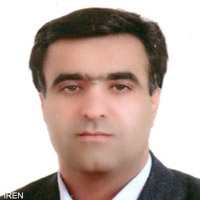Analysis of Actor Positions and Institutional Conflicts in Water Governance in Khuzestan
Water governance in Khuzestan Province, particularly in the Karkheh River Basin, is a complex and multifaceted process involving multiple stakeholders. Adopting a network perspective can provide a systematic and analytical approach to studying this complexity. This research aims to analyze the network of institutional relationships and conflicts in Khuzestan's water governance using a mixed-method approach. To this end, 43 water governance-related institutions were identified as the social boundary of the network using snowball sampling method. To examine institutional relationships, a questionnaire about the intensity of interactions between these institutions was distributed and completed by the respective representatives. These institutions were categorized based on their predominant roles, and social network analysis indicators were measured at the micro level of the network. Additionally, semi-structured interviews were conducted to examine inter-institutional conflicts. Results of the centrality indices indicated that the Provincial Government holds the highest out-degree centrality (90.48%), betweenness centrality (5.1%), and closeness centrality (97.67%), indicated the significant political influence, control power, mediation role, independence, and access to resources and information, thus playing a prominent role in the water governance network. Moreover, the Khuzestan Water and Power Authority with the highest in-degree centrality of 92.86%, held the greatest political authority. The distribution of centrality measures revealed that, despite the significant role of intermediate subgroups in facilitating institutional cooperation, they have low out-degree and betweenness centrality, with asymmetric power distribution. In the conflict network, the Khuzestan Water and Power Authority receives the highest number of conflict ties, while the Environmental Protection Organization has the most conflicts with others. The presence of severe conflicts between the Khuzestan Water and Power Authority, Department of Environment and Agricultural Jihad Organization underscore the need to resolve these conflicts and strengthen coordination in water governance decision-making. Understanding these interactions and conflicts among institutions can assist policymakers in achieving effective water governance
-
Monitoring Ground Subsidence Based on Differential Synthetic Aperture Radar Interferometry and Changes in Groundwater Level (Case Study: Kermanshah Aquifer)
Mohsen Kazemi, Hassan Khosravi, *, Shahram Khalighi Sigaroodi, Shirin Mohammadkhan
Iranian Journal of Watershed Management Science and Engineering, -
Modeling Spatio-Temporal Changes in Evaporation using Class a Pan Evaporation Data: Presenting a Novel Approach for Use in Dynamic and Distributed Models of Rainfall-Runoff
Amir Hossein Parsamehr, *, Shahram Khalighi Sigaroodi, Khaled Ahmadaali
Whatershed Management Research, -
Studies of human interaction with blockchain technology in Iran
Mahdi Akbari Golzar*,
Human Information Interaction, -
"Study of the Interaction of the Lur Ethnic Group with the National Government of Iran and Their Perception of Ethnicity and the National State"
Mohammadreza Rask, *
Iranian Journal of Anthropology Research, -
Environmental Impact Assessment of Land reclamation Project in Khuzestan Province; case of study Miyanab irrigation and drainage network
*, Milad Taqipour, Abas Abdeshahi, Masomeh Forouzani
Journal of Geography and Planning, -
Developing Scenarios for the Reallocation of Water Resources in the Agriculture Sector in the Karun-e-Bozorg basin; Application of Water-Food-Energy Nexus
S. Jaberi, M .Ghanian *, M .Mardani-Najafabadi, M. Shaabani Galogerdi
Iranian Agricultural Extension and Education Journal,




